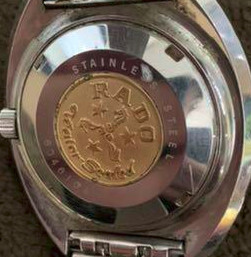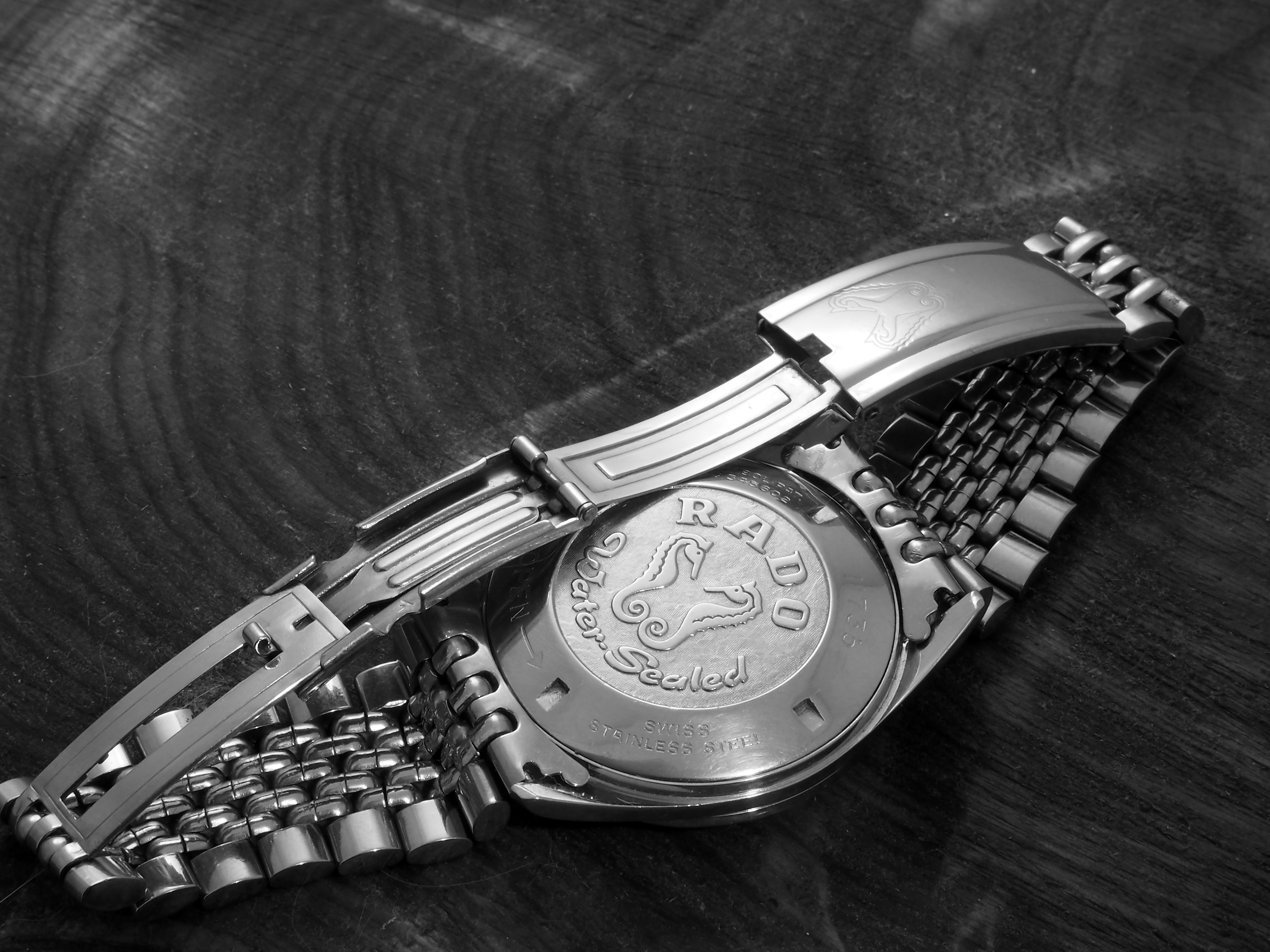Hi,
I've been browsing various shopping and info sites and I've seen some interesting "variation" in case back decoration (or lack of it) primarily from the '70s Rados. I thought I'd try to survey what is out there.
Apologies in advances if this has already been discussed previously, but I wonder if I could get some advice or info from the more informed among us (i.e. most everybody but me  )
)
I am hoping that I can get some information about these various case backs that I am seeing:
- What ones represent legit variants and what times do the variations seem to occur?
- What variations represent damage or over-heavily-polished case backs?
- What ones to steer clear of (possible indicators of fakes or frankens)?
- What case backs represent different "families" of Rado models?
- When or why did the various case backs change?
There are various different types or categories that I observe from '60-'70s vintage Rado watches:
1. Deeply incised or deep relief two seahorse case backs:
There is a central incised circle generally with a cross-hatched or patterned background. Outside the circle there is a minimal flat rim. This pattern is similar to the three seahorse model, but has two seahorses facing each other, rather than three arranged in a radiating pattern. There is very little flat rim surrounding the central circle and all engraving are instead placed on the outer sloped case back. There are general four equidistant notches cut into the case back to allow removal. This pattern seems to date to the late 60's into the early 70's.
The incised central circle generally usually takes the form:
TOP: the brand "RADO" (in spaced capitals)
CENTRAL: Two seahorses facing each other.
BOTTOM: the words "
Water . Sealed" (wrapped around the bottom in cursive script).
Example:

2. Deeply incised or deep relief, three seahorse, case backs:
There is a central incised circle generally with a cross-hatched background. Outside the circle there is a flat rim that generally has a model number at top and a case number at bottom though these are usually heavily polished or 'polished out'. There are general four equidistant notches cut into the case back to allow removal. The three seahorse case backs seem to date from the early to late '70s
The incised central circle generally usually takes the form:
TOP: the brand "RADO" (in spaced capitals)
CENTRAL: A tri-form, radiating, inverted 'Y' pattern of three seahorses with three 5-pointed stars equally spaced between the seahorses. The seahorses curved tails form a loose triskelion at the center of the case back.
BOTTOM: the words "Water . Sealed" (wrapped around the bottom in cursive script).
Example:
3. Gold medallion case backs:
Gold coloured central 'medallion' usually with three radiating seahorses and three stars, as above.
It seems to me that mostly these are examples of an incised case back with a (aged and discoloured) plastic protective film still applied.
I have seen examples where the yellow is obviously plastic (because it has been partly removed. I have also seen examples where it really does look like a gold colored metal.
Example:


There are various types of case backs that seem to "
lightly engraved" as opposed to being in original created in relief. My observation is that these don't seem to be highly or overly polished case backs, but rather do seem to be a form of engraving. This is particularly obvious when there is still visible model or other text engraving apparent too. They sometimes seem to have the words "Stainless Steel" above the central circle image.
Examples:



5. Various Plain case backs:
There are also a lot of "plain" case backs, without or without model and case number engraving.
Examples:
I'd appreciate it if anybody can confirm even rough dates ranges or timelines for the various case back types:
- late '60s - early '70s - Deep incised case back in a larger cross-hatched circle with two seahorses facing each other. Text of "RADO" above and "Water.Sealed" below.
- '70s - Deep incised case back in a smaller cross-hatched circle with three radiating seahorses with three 5-pointed stars. Text of "RADO" above and "Water.Sealed" below.
- '80s onwards - Lots of plain and plain rectangular case backs with four screws in the corners and incised text corresponding to the move to more rectangular quartz and quartz ceramic models of the '80s-'90s.
- 2000s - revival of classic/original models has seen a return to the three seahorse incised case back.
Wherever possible I try to match a visible model number with the watch case and dial. I also steer away from plain case backs or the shallow relief / engraved case backs.
What do you personally steer clear of? What is not a problem to you? Finally, what to make of the outliers and the just plain weird? Are the clear indications, that something may be "wrong" with the watch? What do you look for, or avoid relating to case backs?
Any information, observations, photos, or thoughts, gratefully received.
Thanks,
Slade.
)




 Likes:
Likes: 

 Reply With Quote
Reply With Quote













